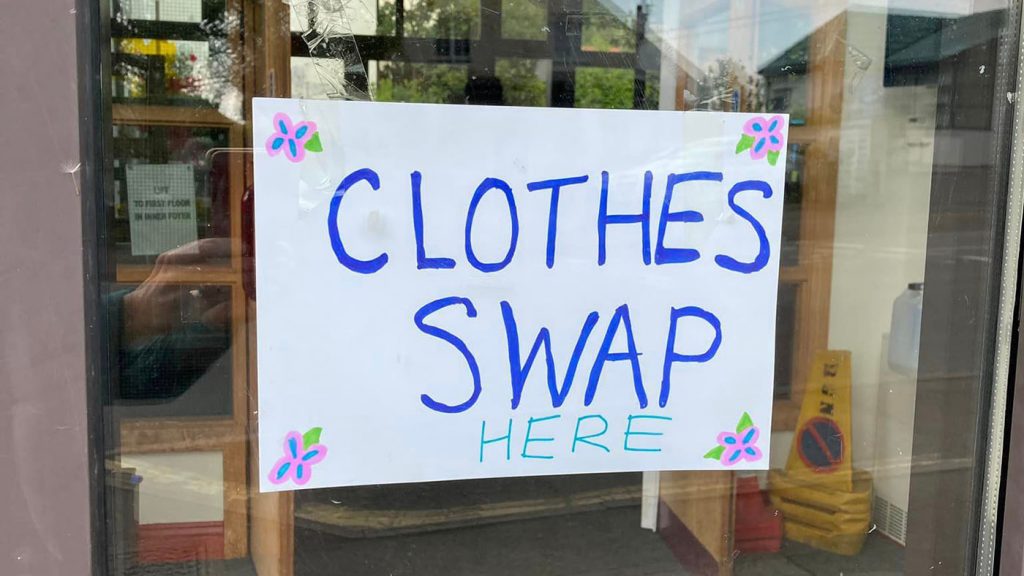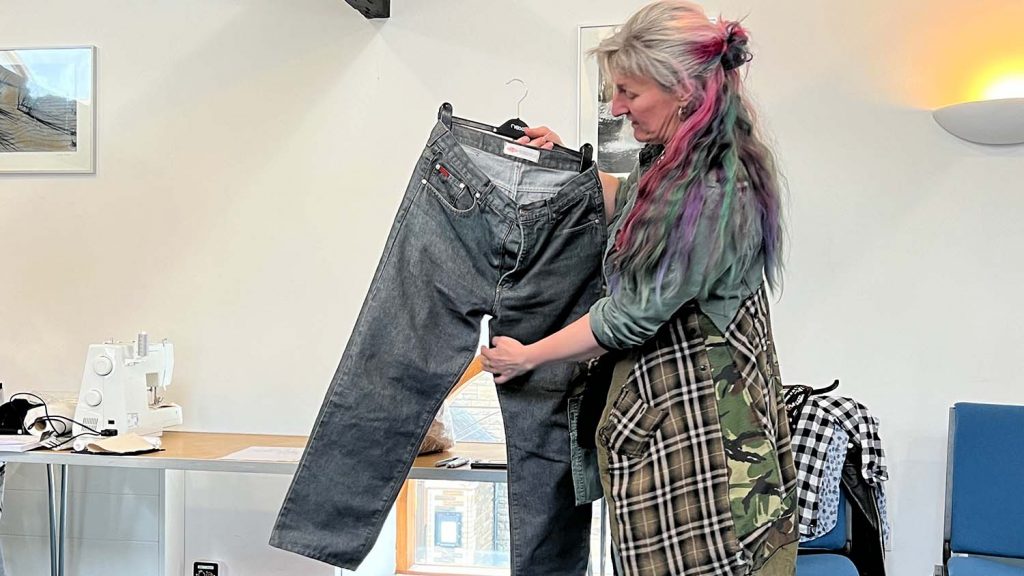Cardiff played host to a clothes swap event last week and we sent one roving reporter to see if he could get himself a new wardrobe to become a more sustainable follower of fashion.

The choice is between a smart new red suit waistcoat or a tie from an H&M. Whichever one I decide on, I’m going to have to say goodbye to a pair of much loved white jumper that I’ve had for years.
I’m in Cardiff at the Rhiwbina Eco Team fashion swap and I’ve given myself a mission to update my wardrobe without a cent and leave looking more fashionable than ever. But there’s more than just fashion at stake, I’m also doing my bit to fight the environmental impact of fast fashion.

Emma Scott-Davies, the clerk and secretary for the Rhiwbina Eco Team, said, “We are doing what we can to reduce things like fast fashion and single-use items and keep a circular economy going. We hope to sort of spread the masses to people that there are other ways to shop than fast fashion websites that we see in the media that are terrible for the environment, terrible for working rights and things like that.”
This clothes swap shop offers a sustainable shopping alternative and educates attendees on the significant impacts of fast fashion and how to tackle them. Before clothes swapping, I attended a sustainable fashion workshop on the first floor that showed off what people have done to make their clothes last longer.

Luo Rio Wild, a fashion designer who participated in the workshop, said: “The challenge that I face adopting sustainable practices is the design from the start. Our purpose in garments is great, and it can be done. You do create a lot of waste. So that’s what one thing to consider is the amount of waste that you create and how you can utilise every little bit.”

After half an hour workshop, people started coming downstairs from the first floor to pick out clothes they hoped to swap. I am one of 45 people who have brought around 100 items of clothing to a clothes swap to combat the negative effects of fast fashion. One of them was Helena Rees, and she arrived early.
“I brought three yellow items today. I’ve worn them numerous times, but I don’t feel like I’d wear them again.” Helena Rees is a 53-year-old occupational therapist who says, “I thought it was a great opportunity. I was gonna get rid of some clothes and take them to charity shops.”

“It’s been a positive experience rewarding. It takes away all this landfill, that’s another massive issue and also saving money because things are really, really expensive now.” Helena said. “I will think about recreating something different and changing up materials, dyeing clothes.”
While I was browsing the clothes swap display, I found a new fashion addition to my wardrobe, it’s a suit waistcoat tucked away in a corner, its tag still intact. Discarding such a gem felt like a missed opportunity, so I swiftly removed it, tucking it away into my hand, fearing someone else might snatch it.

Besides, I picked out two skirts that my friends might like, and I connected with the people gathered here today. I would say I am one step closer to becoming a more sustainable fashion follower.
For anything left over at the end of the event, Emma said: “They will be donated to Tenovus Rhiwbina charity shops down the roads and sell in the shop locally.”
